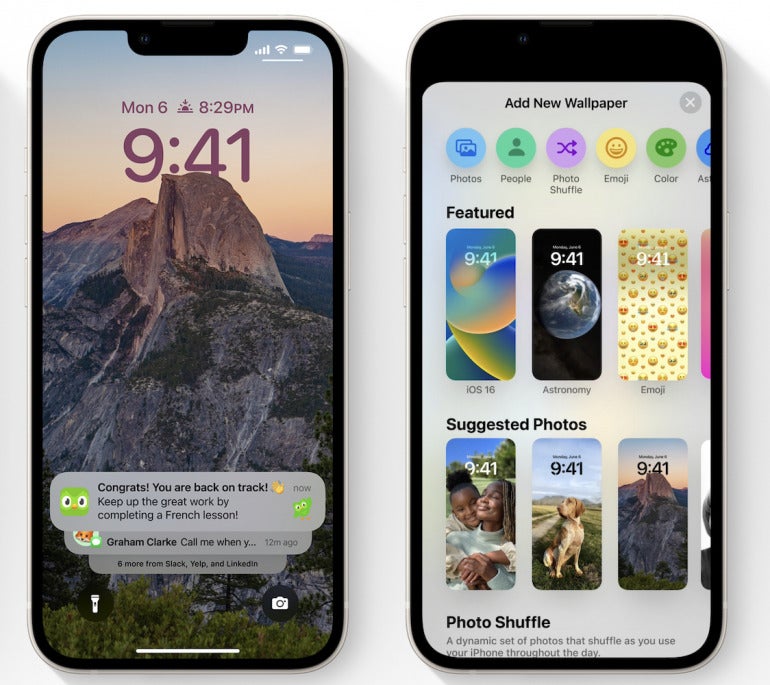
On Sept. 12, 2022, Apple released iOS 16, unveiled during Apple’s WWDC keynote on June 6, 2022. Apple’s primary focus areas for this release of iOS were new intelligence features, communication features and sharing features that also incorporate privacy. Many of these features can be used in both business and non-business environments.
Let’s take a look at the iOS 16 features and how they can benefit you, your devices and your workflows.
Jump to:
iOS 16 is Apple’s latest version of the iOS mobile operating system that powers iPhone devices. It was announced at Apple’s WWDC ’22 conference and released on Sept. 12, 2022, to the general public as a free software update. The version includes features and performance improvements that are available on a wide range of iOS devices.
SEE: Check out TechRepublic Premium’s iOS developer hiring kit.
This new version of iOS includes many new features that are relevant to developers, enterprise customers and consumers, including an all-new Lock Screen design, widgets, new developer application programming interfaces and much more.
Most hardware that supported iOS 15 will also support iOS 16. Here is the full list of iOS 16 supported devices:
| iPhone series | Models | Starting price for base model |
|---|---|---|
| iPhone 14 | iPhone 14 Plus iPhone 14 Pro iPhone 14 Pro Max |
$799 |
| iPhone 13 | iPhone 13 iPhone 13 mini iPhone 13 Pro iPhone 13 Pro Max |
$599 |
| iPhone 12 | iPhone 12 mini iPhone 12 Pro iPhone 12 Pro Max |
$599 |
| iPhone 11 | iPhone 11 Pro iPhone 11 Pro Max |
$269.72* |
| iPhone XS | iPhone XS Max iPhone XR iPhone X |
$219.97* |
| iPhone 8 | iPhone 8 Plus | $119.67* |
| iPhone SE | iPhone SE (2nd generation or later) | $429 |
| iPhone series | Models | Starting price for base model |
| iPhone 14 | iPhone 14 Plus iPhone 14 Pro iPhone 14 Pro Max |
$799 |
* This product is no longer available on the Apple Store, and prices may vary depending on reseller listing.
All users with compatible Apple devices may navigate to the Settings app on their device and select General | Software Update to download and install iOS 16.
SEE: Discover everything you need to know about iPhone 14 with our cheat sheet.
Apple has redesigned the entire Lock Screen (Figure A) in iOS 16, adding a widget system that is reminiscent of the Apple Watch’s screen customization options and ensuring that notifications are less intrusive to your daily workflow. Multiple Lock Screens can be created and swapped between easily.
Figure A
Apple has premade several lock screens that feature animations and fluid transitions from the Lock Screen to the Home Screen. Photos and widgets are a huge design feature on the Lock Screen and let you customize the look and feel of your devices. You can choose the font, color and size and include a widget area under the time, so you’re always seeing up-to-date information from your favorite apps right on the Lock Screen.
SEE: This tool lets you always access your locked iOS device.
Notifications also received an update in iOS 16. In this version of iOS, new notifications appear at the bottom of the screen. Live Activities will allow applications to update your Lock Screen with live event data rather than spamming notifications.
Focus Mode allows users to ensure they are not interrupted during work by personal contacts, or interrupted at home by work contacts, allowing for better work-life separation. In iOS 16, Focus Modes can automatically set a particular Lock Screen configuration, so you could have a dedicated Lock Screen for work, home or other activities (Figure B).
Figure B
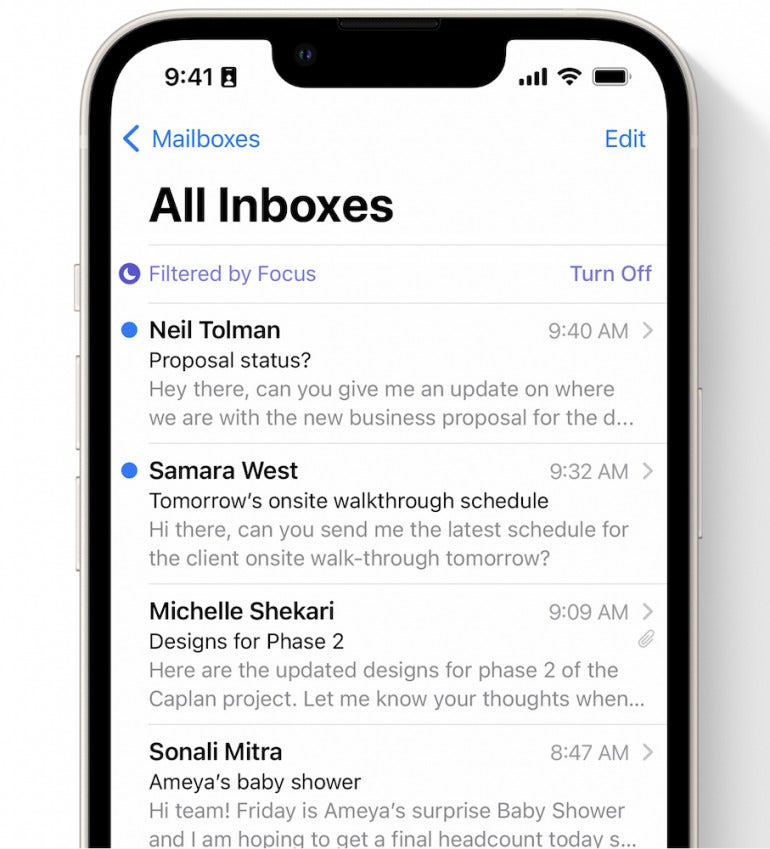
The Focus Filters feature is available to third-party developers; it lets your apps filter out distracting content when a particular Focus Mode is enabled. Safari was demoed for this feature and showed triggering specific tab groups when Focus Mode is enabled, so you’re not tempted to browse social media while at work, for example.
iOS 16 features a wide variety of changes that allow for better communication and more ways to handle that communication.
Starting with Messages, the app now has the ability to edit sent messages, undo a sent message, undelete iMessage conversation or mark message threads as unread, so you can easily circle back to them later. When sending an iMessage, you have the option to tap Undo Send when long pressing on a sent message.
In iOS 16, tapping Undo Send allows users to unsend a message for up to 15 minutes after sending it. Editing works in the same way: Tap and hold on a recently sent message and select Edit Message to begin editing it up to 15 minutes after initially sending it. After the 15 minutes have elapsed, the Edit and Unsend options will be unavailable. When a message is edited, the recipient will get the newly revised message along with the word Edited under the message.
Shared with You, introduced in iOS 15, received third-party integration through an API available to developers, allowing content shared between messages and third-party apps to be surfaced in those third-party apps as well.
SharePlay, introduced in iOS 15, gives users the ability to kick off a session within Messages and without audio or video. You can now perform a SharePlay session through Messages and have the ability to chat in real time through Messages.
Quick Note is a feature that first appeared on the iPad in iPadOS 15 last year and allows users to quickly create a new note from anywhere in the operating system with the Apple Pencil. Users have clamored to have this feature added to iOS for nearly a year, and Apple has revamped it to work on the iPhone.
Quick Note is available in the Share Sheet for many built-in applications to quickly and easily create a new note using an attachment, but Apple added a Control Center option as well for quickly creating a note from anywhere in iOS 16. Enable the option by going to Settings | Control Center, then tapping the plus (+) button on Quick Note. When you do this, swiping down for the Control Center will have a new Quick Note button, which upon tapping will open the Quick Note window.
SEE: Here’s how you can customize your iPadOS 16 Control Center.
iCloud Shared Photo Library is a separate photo library that is available to those who have Family Sharing set up, allowing up to five users to easily share photos with one another (Figure C). The shared library provides read and write access to all users who are invited.
Figure C
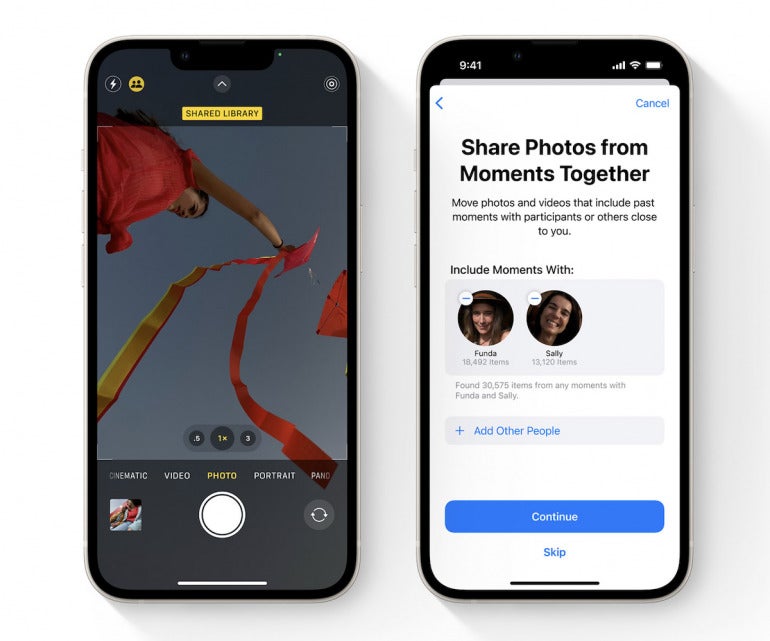
In addition, it has the ability to automate sharing into the shared library based on users who are in the photos themselves or through the Camera app, which lets users select which library they want the photo to be taken to be saved to.
You can also switch the library mode in the Camera automatically based on shared users who are nearby when you’re taking the photos, so pictures taken with shared users are automatically synced to the shared library. This is a huge improvement for users with multiple family members who want to more easily sync photos with one another.
Apple continually improves privacy on its platforms, and iOS 16 is no exception. In iOS 16, Apple introduced a feature called Safety Check. This is a section in Settings that lets users revoke access to users they’ve shared with — for example, if you need to escape an abusive or physically harmful situation and someone you’ve shared your location or other information with is an abuser.
SEE: Apple also announced its new privacy feature Passkey at WWDC 2022.
This feature revokes Find My Access, resets sharing permissions and only allows FaceTime, calls and messages on the current device you’re using. The Safety Check privacy feature in iOS 16 also shows a list of all users you’re currently sharing information with to better gauge and stop sharing with them as needed.
In iOS 15, Apple began allowing for supported state driver’s licenses to be used in the Wallet app. In iOS 16, Apple is taking that a step further by allowing users to verify their driver’s license for purchases or access to apps if needed through an in-app ID verification flow.
The Wallet app can even store many types of data, including keys for hotels, HomeKit accessories and more. Beginning in iOS 16, users are able to share these keys with others through an industry standard way that works with other devices, even if the person you’re sharing with doesn’t use iOS.
The last major Wallet app feature updates are the ability to pay later and order status. Through the Apple Pay Later feature, payments for purchases can be split into four payments over a six-week period with no interest or fees. Merchants do not see any difference on their end and every Apple Pay merchant supports this feature. Apple Pay Order Tracking lets merchants deliver order status directly through the Wallet app.
In iOS 16, Apple Maps allows for additional transit information, including the ability to reload transit cards right from the Maps app (Figure D).
Figure D
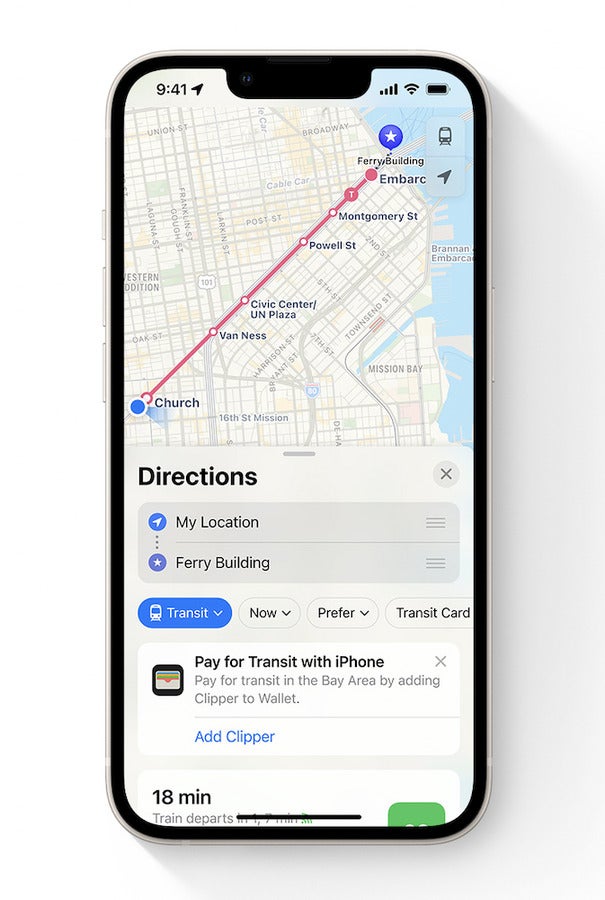
Two big features added to Apple Maps in iOS 16 are multi-stop routing and new MapKit integrations for third-party apps. Multi-stop routing allows you to create driving directions on the Mac, iPhone or iPad, share them with your iPhone and include up to 15 stops in advance along the trip path. You can also plan additional stops while routing through Siri.
SEE: Explore the tech and innovations announced at Apple Far Out 2022.
MapKit is Apple’s API for allowing map features in third-party apps. It received a huge update, with the ability for third-party apps to integrate with the Look Around feature in Apple Maps and the new detailed maps that Apple began rolling out worldwide. Additionally, server-side APIs are available to developers looking to integrate maps into websites later this year.
iOS 16 came with additional updates to Apple’s family sharing features, allowing for more niceties to let families stay in touch and set up devices for children. iOS 16 includes the ability for parents to more easily configure devices for children, set the parental controls automatically based on the age of the child and review settings periodically to ensure the child’s restrictions are always at the appropriate level.
HomeKit is Apple’s answer to the home automation arena. At WWDC ’22, Apple reaffirmed its plans for Matter, a multi-partner strategy to make more accessories and platforms available inside of the Apple Home app and ensure that home automation is cross platform (Figure E).
Figure E
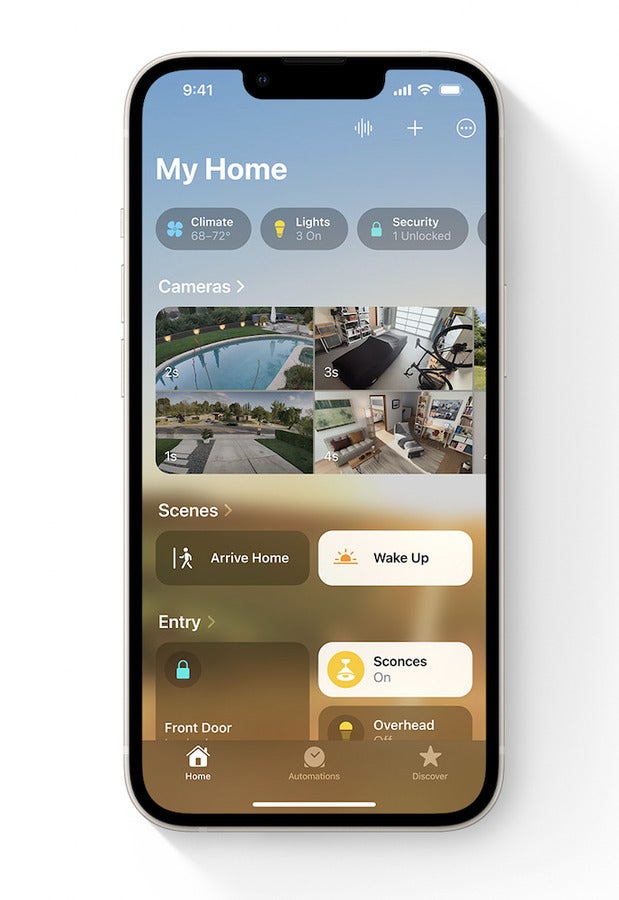
Apple also announced a Home app redesign that allows discovery of accessories by room, the ability to show cameras in a 4-up view that is more intuitive, and makes adding, viewing and controlling different accessory times more user friendly for nontechnical users. The goal of the app redesign was to help with user engagement and allow for the discovery of accessories, where the previous generation of Apple Home app was a letdown for many users.
CarPlay is an iOS feature that allows users to connect their devices to their vehicles and have the infotainment system display an Apple-curated interface (Figure F). From that interface, users control their iPhones in a vehicle by voice or simple touch, keeping distractions to a minimum.
Figure F
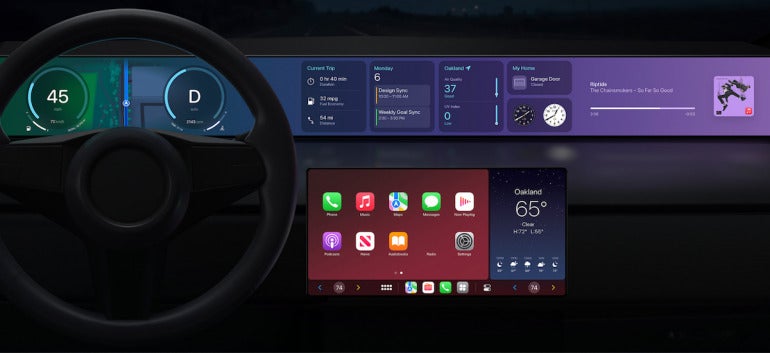
Apple demoed its long-term CarPlay strategy at WWDC ’22; this CarPlay strategy came in a later update to iOS 16 and required partner vehicle manufacturer changes. The next generation of CarPlay integrates with all displays in the vehicle, collecting live data from the vehicle, such as speed, engine information and cluster panel information. This information is then displayed on a screen using a completely customizable interface provided by your connected iPhone.
SEE: Check out these enhanced Apple watches, iPhones and AirPods.
Apple said these features will begin rolling out to vehicles beginning in late 2023, but the company has laid down the software support for these features in the initial update.